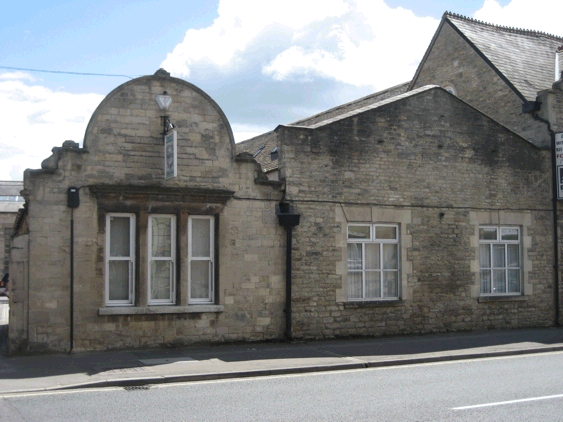|
Osteoarthritis (OA) is often called the 'wear and tear' arthritis. It occurs when the cartilage of a joint (a thin layer of gristle that covers
the end of the bones and allows them to glide over each other) becomes damaged. When the cartilage deteriorates, the bone underneath can thicken, causing pain, stiffness and swelling. The joints most affected are
the knees, hips, hands and big toes.
OA is uncommon before the age of 40. Though the exact cause of OA is unknown, according to the Arthritis Research Campaign, it is probably due to the fact that as we age,
we tend to put on weight thereby putting more pressure on our joints, our muscles become weaker and our body loses its ability to heal itself.
When OA occurs in younger people, it is usually because the joint
cartilage has been damaged through injury (such as a sprain or fracture), a bacterial or viral infection or even through overuse of a particular joint as is common in farmers (hips), plumbers (knees) and footballers
(knees and ankles). The Arthritis Research Campaign estimates that 8 million Britons are affected by Osteoarthritis, but only 1 million seek treatment.
It can be very debilitating. In severe cases, the
cartilage can deteriorate to the extent that the bones rub together, making it difficult to move the affected joint at all. But symptoms vary from person to person - and some people may have OA without experiencing
many symptoms at all. Osteoarthritis does not always get worse.
OA can affect any of the 33 joints in the feet but mostly affects the joints at the base of the big toes. This joint is more prone to wear and
tear from the pressures of walking, especially if you over-pronate (ie roll your foot in excessively as you walk). Wear and tear at the ends of the bone cause the cartilage to erode and the bone ends may begin to
join together. Eventually your big toe may become rigid (a condition known as hallux rigidus) which makes walking difficult. Or your big toe may drift towards your other toes (hallux valgus) which can leads to
bunions.
You may initially feel a toothache-type ache in the affected joint that gets worse when you're active, wearing high-heels or when it's cold and damp. It may progress to the stage where your
feet ache at night. In severe cases, the range of movement in the joint may fall to the extent that you can't move it at all.
If you are worried that you have OA, you should see your GP or a podiatrist.
The early you are diagnosed, the more effective any treatment will be. If you do have OA, there are many things you can do yourself to help ease the condition:
Footwear: Minimise the stress on
the joints by choosing well-cushioned shoes. Go for shoes with lace-up fastenings or an adjustable strap: they keep the heel in place and stop the toes being pushed to the front of the shoe. Your feet should keep
their natural shape when in shoes. There should be a centimetre between the end of your longest toe and end of shoe. They should also be roomy enough to accommodate any swelling, so go for a wide, deep pair.
Exercise:
Toes aren't a part of the body we often think of exercising, but by exercising and stretching regularly, you can help nourish the joint cartilage and strengthen the muscles and tendons around the joint. Podiatrist Trevor Prior recommends you put your feet side by side (say, while you're in the bath), and try to move your big toes towards each other. Do this three or four times a day. You should ideally exercise your whole body to keep your joints flexible, your muscles strong and your bone and cartilage tissues healthy. Yoga is a great exercise for all your joints, including your toes. Swimming is also great, because it doesn't put any pressure on your joints.
What can other health professionals do?
Your GP may recommend painkillers or steroids to ease the pain. There are also creams and gels (such as Capsaicin cream) which can be absorbed into the bloodstream if rubbed on the affected joints when they are painful, such as after exercise or at the end of the day. Ideally, you should be seen by a team of rheumatologists, physiotherapists, occupational therapists and podiatrists.
What can a podiatrist do?
Though there is no known cure for OA, there are many ways your podiatrist can help you ease the pressure on the affected joints, and therefore reduce the pain and inconvenience:
Orthoses:
Orthoses are special shoe inserts that help re-distribute the pressure as you walk. They will help you walk in such a way that alleviates the pain in your joints.
Shoes:
Your podiatrist can advise you on the best type of footwear to wear for your exact problem. If you develop hallux valgus (where your big toe drifts towards your second toe), for example, your podiatrist may recommend a shoe with a stiff sole. This relieves pain by reducing the movement of the big toe. In some cases, a shoe with a slight heel raise may be more comfortable.
Strapping and padding: Your podiatrist may strap the feet in the short-term to limit joint movement. He or she can also provide protective shields for your toes or padding to relieve pressure and
friction.
Surgery: If your problem does not improve with the above measures, you may be referred to a podiatric surgeon who will evaluate the extent of your problem and see if you are suitable
for excisional arthroplasty (replacement of joint surfaces), interpositional arthroplasty (placing soft tissue, especially joint capsule, between the resected bone surfaces),.osteotomy (decompresses and realigning
the joint surfaces), joint replacement (used for irreverisibly damaged joints) or arthrodesis (where the bones are fused together). However, surgery is only used a last resort.
|

























